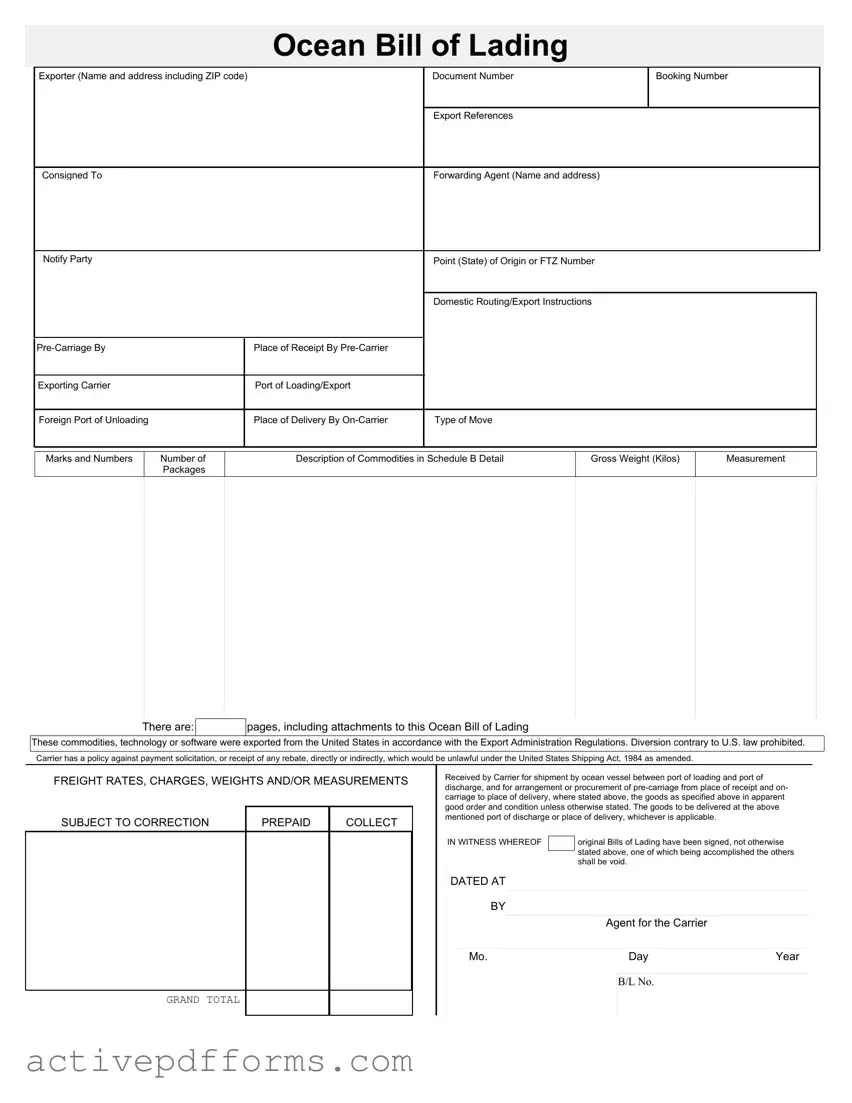In international trade, the importance of documentation cannot be overstated, especially when it involves the transport of goods across oceans. One key document is the Sample Ocean Bill of Lading form, which serves a multifaceted role in the shipping industry. It functions not only as a receipt for the cargo but also as a contract for transportation and a document of title for the goods being shipped. This comprehensive document captures vital details such as the exporter's information, including name and address, document and booking numbers, export references, and details about the forwarding agent. Moreover, it delineates the journey of the shipment from the point of origin or Free Trade Zone number through to the destination, including any domestic routing and export instructions, pre-carriage, exporting carrier, and ports of loading and unloading. The form also meticulously lists the goods being shipped, including their type, marks and numbers, number and description of commodities, gross weight, and measurements. It underscores the legal compliance of the commodities with U.S. export regulations and explicitly prohibits any diversion contrary to U.S. law. Additionally, it addresses the financial aspects of the shipment, specifying freight rates, charges, and the terms of payment. The declaration of the goods' receipt in good condition, unless noted otherwise, and the stipulation that originals of the bill, once signed, render copies void, are critical to its role as evidence in any dispute resolution. This document ensures transparency, accountability, and efficiency in international shipping, making it indispensable in the global logistics network.

